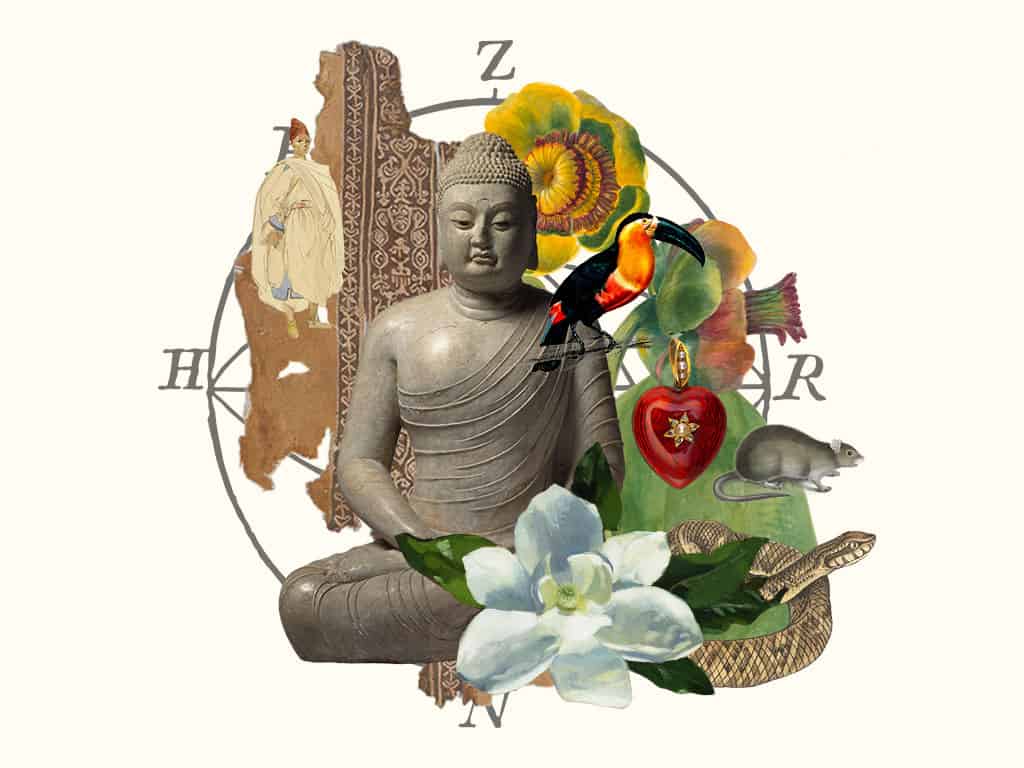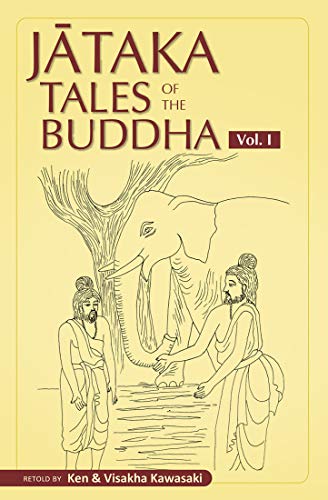“You have seized my brothers, haven’t you?
Yes, I have, “the yakkha (demon) admitted.
“Why?”
“Because all who go into this pool belong to me.”
“All?”
“All except the one who knows what righteousness is”.
Seeking Righteousness Devadhamma Jataka

Jātaka Tales of the Buddha
An Anthology Vol.I

Jātaka Tales of the Buddha: An Anthology Vol.I_ Ken and Visakha Kawasaki Buddhist Publication Society, Kandy, Sri Lanka 2010
The Jataka or the “birth stories” are a collection of ancient stories that narrate incidents from past lives of Buddha.
According to the Buddhist tradition, after attaining enlightenment Buddha recollected events from his previous lives, and while giving instruction narrated these stories to his disciples. Composed in Pali and Sanskrit, these stories are inspired by South Asian folklore. Buddha takes both human and non-human forms in them while providing lessons in morality. Each story opens with a current scene, where an event prompts Buddha to narrate a Jataka, taking the narrative back in time from the current point of the story. After recounting of the tale, Buddha identifies the present and past lives of the characters discussed in the Jataka and provides the reason for recollecting the story.
Why This Text is Transformative?
Jataka tales are about life’s challenges, temptations, and uncertainties.
Jataka tales are about life’s challenges, temptations, and uncertainties. They are held in esteemed position in all Buddhist traditions and have been immortalized in art, music, and drama. The Jatakas are the most comprehensible among all Buddhist literature and are perfect text to introduce first year college students to Buddhism and Buddhist literature. Students can easily relate to the moral and philosophical questions addressed in the text, including who is deceitful? Who is a good politician? What should be the ethics of running a business?
A Focused Selection
Study Questions
"Seeking Righteousness Devadhamma Jataka"
Consider reading two Jataka tales over two classes. One detailed Jataka, “Seeking Righteousness Devadhamma Jataka” and a short one, for example “Prince Wicked and the Grateful Animals”
Study questions for the “Seeking Righteousness Devadhamma Jataka”
1) Who is a Bodhisattva?
2) What according to the Prince Mahimsāsa is righteousness?
3) Why do you think Prince Mahimsāsa was able to recognize that the forester was a demon?
4) Why do you think the demon had the divine consent to devour the wayfarer?
5) Why did the Buddha narrate the tale of the Devadhamma Jataka? What is the point of the story?
"Prince Wicked & the Grateful Animals"
Study questions for the “Prince Wicked and the Grateful Animals”
1) Why do you think the poor man saved the lives of the Snake, the Rat, and the Parrot?
2) Why do you think the prince hated the poor man who had saved his life?
3) Do you think it was fair for the wise man and the crowd to kill the prince? Do you think he deserved to die?
4) What do you think is the morale of the story?
Building Bridges
Supplemental Resources

Don Quixote and the Windmills, 1945 - Salvador Dali - WikiArt.org
Don Quixote has been an inspiration for many visual artists. Spanish surrealist Salvador Dali returned to the novel multiple times throughout his long career, creating sketches, paintings, and sculptures of Don Quixote and Sancho, depicting important episodes in the book. A pairing of an episode with one of Dali’s works can lead to a stimulating discussion.
What details do students notice? What do his artistic choices suggest about his interpretation of the characters? To the extent that students are familiar with the story of Don Quixote, it is likely to be as it is filtered through the musical The Man of La Mancha. The musical has its own merits, and is framed by the interesting device of placing Cervantes on stage as a narrator, but of course it is impossible for it to capture much of the complexity of the book – and it alters the ending dramatically. Students may find it interesting to compare the two endings.
Text Mapping
Discipline Mapping
English/Composition Studies
History
Sociology
Philosophy & Religion
Page Contributor




